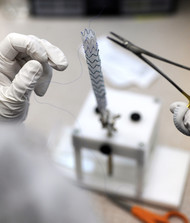To reduce the risk of hospital acquired infections, a recent sudy demonstrates that it is usually safer for patients to administer a blood transfusion after the hemoglobin falls bellow 7 or 8 g/dL rather than below 10g/dL
Hospital-associated infection can be medical malpractice. 5% of hospital inpatients develop an infection during their stay. As a result patients who develop an infection usually have to extend their stay in the hospital. Hospital acquired infection if not diagnosed and treated properly can also lead to the death of the patient. .
Blood transfusion is a very common hospital procedure during which the patient has a risk of developing an infection.
Hospitals have different strategies as to when a blood transfusion is required. Some have a liberal strategy which means that they will administer red blood cells to a patient when the patient’s hemoglobin level falls below 10 g/dL and some have a more restrictive strategy and will give a blood transfusion to the patient once the level of hemoglobin is below 8 or 7 g/dL.
 New York Personal Injury Attorneys Blog
New York Personal Injury Attorneys Blog


 Hospital pharmacists often commit medication errors or miss doses because they are constantly interrupted or distracted. Recent studies show that interruptions, especially phone calls are increasing the risk of medication error. A recent
Hospital pharmacists often commit medication errors or miss doses because they are constantly interrupted or distracted. Recent studies show that interruptions, especially phone calls are increasing the risk of medication error. A recent 
